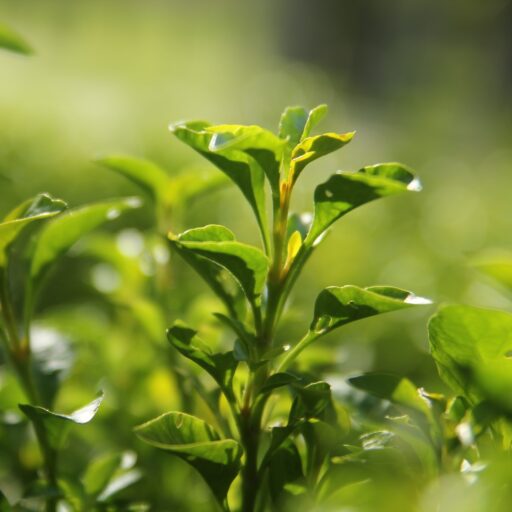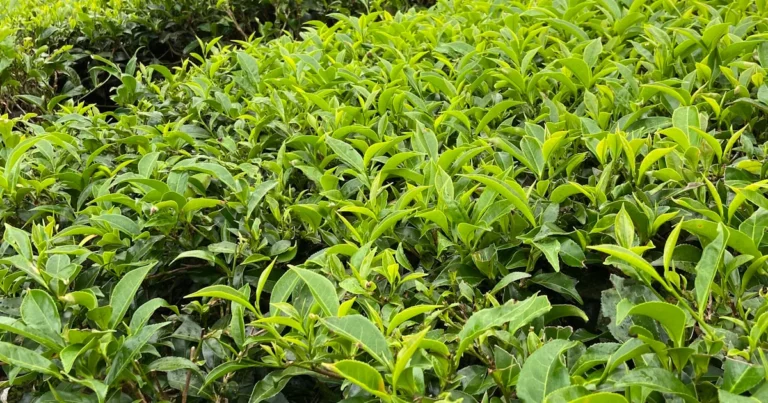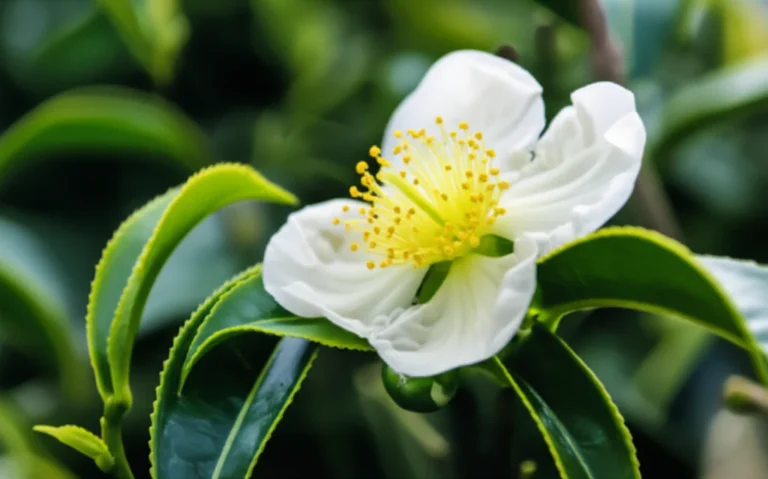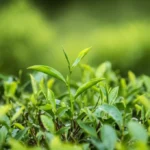Support our educational content for free when you purchase through links on our site. Learn more
8 Critical Tea Plant Nutrient Deficiencies You Must Know in 2025 🍃
Ever stared at your tea bushes and wondered why those once-vibrant leaves are turning yellow, curling, or just looking downright sad? You’re not alone! At Growing Teas™, we’ve witnessed firsthand how nutrient deficiencies can silently sabotage your tea garden’s health and the flavor of your harvest. Did you know that a simple nitrogen shortage can flatten the rich umami taste of your green tea, while potassium deficiency might leave your leaves scorched and brittle? Intrigued? Stick around because we’re about to unlock the secret language of your tea plants and reveal 8 critical nutrient deficiencies that every tea grower must recognize—and how to fix them before your next flush.
From the telltale purple hues of phosphorus deficiency to the subtle signs of micronutrient shortages like zinc and boron, this comprehensive guide will equip you with expert insights, practical tips, and sustainable strategies to keep your tea thriving. Plus, we’ll share our favorite soil testing tools and organic fertilizer recommendations that have transformed our own tea gardens. Ready to become a tea nutrition detective and brew the best cup possible? Let’s dive in!
Key Takeaways
- Nitrogen, phosphorus, and potassium are the primary macronutrients essential for tea growth and flavor.
- Micronutrients like iron, manganese, zinc, and boron, though needed in tiny amounts, critically affect tea quality and plant health.
- Visual symptoms such as leaf yellowing, purpling, and scorching help diagnose specific nutrient deficiencies.
- Soil pH (ideally 4.5–5.5) is crucial for nutrient availability; improper pH can lock nutrients away even if present.
- Regular soil testing and foliar feeding with organic amendments prevent and correct deficiencies sustainably.
- Proper irrigation and environmental management enhance nutrient uptake and overall tea plant vigor.
Unlock the secrets to nutrient-perfect tea plants and elevate your homegrown tea experience!
Table of Contents
- ⚡️ Quick Tips and Facts About Tea Plant Nutrient Deficiencies
- 🌱 Understanding Tea Plant Nutrition: A Historical and Botanical Overview
- 🔍 Why Nutrient Deficiencies Matter: Impact on Tea Yield and Quality
- 🧪 Essential Nutrients for Tea Plants: Macro and Micronutrients Explained
- 1️⃣ Identifying Nitrogen Deficiency in Tea Plants: Symptoms and Solutions
- 2️⃣ Phosphorus Deficiency: How It Affects Tea Plant Growth and How to Fix It
- 3️⃣ Potassium Deficiency Signs and Remedies for Healthy Tea Leaves
- 4️⃣ Calcium Deficiency in Tea Plants: Causes, Symptoms, and Treatment
- 5️⃣ Magnesium Deficiency: How to Spot and Correct It in Your Tea Garden
- 6️⃣ Iron Deficiency and Chlorosis in Tea Plants: Diagnosis and Management
- 7️⃣ Manganese and Zinc Deficiencies: Hidden Threats to Tea Plant Health
- 8️⃣ Sulfur and Boron Deficiencies: Lesser-Known but Crucial Nutrients for Tea
- 🌿 Soil Testing and Nutrient Management Strategies for Optimal Tea Growth
- 💧 Irrigation and Its Role in Nutrient Uptake for Tea Plants
- 🌞 Environmental Factors Influencing Nutrient Deficiencies in Tea Gardens
- 🛠️ Practical Fertilizer Recommendations and Application Tips for Tea Growers
- 📊 Monitoring and Diagnosing Nutrient Deficiencies: Tools and Techniques
- 🍵 How Nutrient Deficiencies Affect Tea Flavor, Aroma, and Market Value
- 🌍 Sustainable Practices to Prevent Nutrient Deficiencies in Tea Cultivation
- 📚 Recommended Links for Further Reading on Tea Plant Nutrition
- ❓ Frequently Asked Questions About Tea Plant Nutrient Deficiencies
- 🔗 Reference Links and Scientific Sources on Tea Plant Nutrient Deficiencies
- 🏁 Conclusion: Mastering Tea Plant Nutrition for a Thriving Tea Garden
Here at Growing Teas™, we’ve seen it all. From the most lush, vibrant tea gardens to plants that look, well, a little sad. 😥 More often than not, a droopy, discolored tea plant is crying out for help, not because of a pest or disease, but because it’s just plain hungry! Think of your tea plant like a gourmet chef; it needs a precise balance of ingredients to create that masterpiece cup of tea you love. When even one ingredient is missing, the whole recipe can fall flat.
But how do you know what your plant is craving? Is it begging for nitrogen? Pleading for potassium? Don’t worry, we’re about to turn you into a tea plant nutritionist. Let’s decode the secret language of your tea leaves together!
⚡️ Quick Tips and Facts About Tea Plant Nutrient Deficiencies
In a hurry? Here’s the tea, straight up:
- Yellowing Older Leaves? 🍂 It’s likely a Nitrogen (N) deficiency. Nitrogen is mobile, so the plant moves it from old leaves to new growth.
- Purple or Reddish Tinge? 💜 Your plant is probably low on Phosphorus (P). This is especially common in young plants or during cool weather.
- Scorched Leaf Edges? 🔥 Looks like a burn, but it’s a classic sign of Potassium (K) deficiency. Potassium is key for water regulation and overall plant vigor.
- Yellowing Between the Veins? 🍃 If it’s on older leaves, suspect Magnesium (Mg) deficiency. If it’s on new leaves, it’s likely Iron (Fe) or Manganese (Mn).
- Stunted, Rosette-like Growth? 🥀 This points to a Zinc (Zn) deficiency, where the spaces between leaves (internodes) shorten dramatically.
- Test, Don’t Guess! ✅ The single most important tip we can give you is to test your soil. A simple soil test kit can save you a world of heartache and prevent you from applying the wrong fix.
- pH is Paramount: Tea plants are acid-lovers! They thrive in a soil pH between 4.5 and 5.5. If your pH is off, your plant can’t absorb nutrients even if they’re present in the soil.
- Quote to Remember: “Tea requires a lot of macro and micronutrients for growth because it cannot be grown without the usage of fertilizer and other nutrient supplies.”
🌱 Understanding Tea Plant Nutrition: A Historical and Botanical Overview
The tea plant, Camellia sinensis, isn’t just any old shrub. It’s a botanical marvel with a rich history and very particular tastes. Originating in the misty mountains of Southwest China, it evolved in well-drained, acidic forest soils rich in organic matter. This ancestral environment is the key to understanding its modern-day nutritional needs.
Unlike your average garden vegetable, tea plants are what we call “acidophilic,” meaning they absolutely adore acidic conditions. This preference is tied to how they absorb crucial nutrients, especially micronutrients like iron and manganese. For centuries, tea cultivation relied on the natural richness of these native soils. However, as global demand for tea exploded, growers had to learn how to sustain production, which meant mastering the art and science of fertilization. This is where understanding the plant’s fundamental needs becomes critical for anyone interested in Green Tea Cultivation.
🔍 Why Nutrient Deficiencies Matter: Impact on Tea Yield and Quality
So, your plant has a few yellow leaves. Big deal, right? ❌ Wrong!
A nutrient deficiency is more than a cosmetic issue; it’s a direct threat to your harvest’s quantity and, more importantly, its quality. Here’s the breakdown:
- Reduced Yield: A hungry plant is a weak plant. It won’t have the energy to produce the lush, rapid flush of new leaves—the very part you harvest for tea. Growth will be slow, and the overall size and vigor of the plant will diminish.
- Poor Flavor and Aroma: This is the big one for us tea lovers. Essential nutrients are the building blocks of the compounds that give tea its incredible flavor, aroma, and character.
- Nitrogen, for example, is a cornerstone of amino acids like theanine, which gives tea its savory “umami” taste and calming effects. A nitrogen-deficient tea will taste flat and boring.
- Potassium influences the production of tannins, which provide briskness and body.
- Sulphur is a component of many of the volatile compounds that create tea’s delightful aroma.
- Weakened Defenses: A well-nourished plant is better equipped to fight off pests and diseases. Deficiencies create stress, making your tea plant an easy target for all sorts of garden nasties. This not only impacts the plant’s survival but also the potential Health Benefits of Tea derived from a robust, healthy plant.
🧪 Essential Nutrients for Tea Plants: Macro and Micronutrients Explained
Think of your tea plant’s diet in two categories: the main course (macronutrients) and the essential vitamins (micronutrients). The plant needs large quantities of macros and only tiny amounts of micros, but both are absolutely vital. A deficiency in any one of them can cause serious problems.
Here’s a handy table to break it down:
| Nutrient Category | Nutrients | Role in the Tea Plant | Mobility |
|---|---|---|---|
| Primary Macronutrients | Nitrogen (N), Phosphorus (P), Potassium (K) | The “Big 3” for fundamental growth, energy, and quality. | Mobile (N, P, K) |
| Secondary Macronutrients | Calcium (Ca), Magnesium (Mg), Sulphur (S) | Structural integrity, photosynthesis, and protein building. | Immobile (Ca, S), Mobile (Mg) |
| Micronutrients | Iron (Fe), Manganese (Mn), Zinc (Zn), Boron (B), Copper (Cu) | Enzyme activation, chlorophyll synthesis, and cell development. | Mostly Immobile |
What does “Mobility” mean? It’s a crucial concept!
- ✅ Mobile Nutrients (N, P, K, Mg): The plant can move these nutrients from older leaves to support new, young growth. Therefore, deficiency symptoms appear on older, lower leaves first.
- ❌ Immobile Nutrients (Ca, S, Fe, Mn, Zn, B): These nutrients get “locked” into place once they are used. The plant can’t move them. So, deficiency symptoms show up on new, upper leaves and growing tips first.
Understanding this simple rule will make you a master diagnostician!
1️⃣ Identifying Nitrogen Deficiency in Tea Plants: Symptoms and Solutions
Nitrogen is the undisputed king of tea nutrients. It’s the “growth engine,” driving the production of lush, green leaves. When your plant is low on N, it’s one of the most obvious deficiencies.
-
Symptoms:
- Uniform yellowing (chlorosis) of the oldest, lowest leaves on the plant.
- The yellowing will progress up the plant as the deficiency worsens.
- Stunted, spindly growth with small, pale leaves.
- Significantly reduced yield of new shoots.
-
Why it Happens: Nitrogen is a key component of chlorophyll (the green stuff) and amino acids. The plant sacrifices its old leaves to provide nitrogen for the precious new growth. Research shows that tea plants have a preference for ammonium (NH4+) forms of nitrogen, which are highly effective in promoting amino acid accumulation.
-
The Fix:
- Short-Term: Apply a liquid fertilizer high in nitrogen, like a fish emulsion or a balanced liquid feed like Miracle-Gro Water Soluble All Purpose Plant Food. This gives the plant a quick boost.
- Long-Term: Amend your soil with rich organic matter like compost or well-rotted manure. For a targeted approach, use a slow-release fertilizer formulated for acid-loving plants, such as Espoma Holly-tone. This is a cornerstone of our Organic Farming Techniques.
👉 Shop Fertilizers on:
2️⃣ Phosphorus Deficiency: How It Affects Tea Plant Growth and How to Fix It
If Nitrogen is the gas pedal, Phosphorus (P) is the engine’s ignition system. It’s the “energy manager,” crucial for converting sunlight into usable energy and, most importantly, for developing a strong root system.
-
Symptoms:
- A tell-tale purplish or reddish-bronze discoloration, especially on older leaves.
- Overall stunted growth.
- Poor root development, which you might notice if you’re repotting.
- Leaves may be smaller than normal and have a dull, dark green color before turning purple.
-
Why it Happens: Phosphorus is vital for cell division and energy transfer (ATP). A lack of it literally stalls the plant’s growth engine. It’s often “locked up” and unavailable in soils with a high pH, which is another reason to keep your soil acidic!
-
The Fix:
- Apply a fertilizer rich in phosphorus, such as bone meal (an excellent organic option) or a superphosphate.
- Many balanced fertilizers for flowering or fruiting plants have a higher middle number (the ‘P’ in N-P-K) and can be effective.
- Ensure your soil pH is in the correct range (4.5-5.5) to make existing phosphorus available.
3️⃣ Potassium Deficiency: Signs and Remedies for Healthy Tea Leaves
Potassium (K) is the “quality enhancer” and the plant’s all-around health tonic. It regulates water movement, strengthens cell walls, and helps the plant withstand stress from drought, cold, and disease. For tea quality, it’s a superstar, influencing the final flavor profile.
-
Symptoms:
- The classic sign is a browning or scorching along the outer margins (edges) of older leaves, while the center of the leaf remains green.
- The plant may look wilted even when the soil is moist.
- Increased susceptibility to pests and diseases.
- In severe cases, leaves will curl and drop prematurely.
-
Why it Happens: Potassium controls the opening and closing of stomata, the tiny pores on leaves that regulate gas exchange and water loss. Without enough K, this system fails, leading to cellular damage at the leaf edges where water stress is highest.
-
The Fix:
- Sulfate of potash is an excellent source of potassium that also helps maintain soil acidity.
- Kelp meal is a fantastic organic source of potassium and other micronutrients.
- Many “winterizer” lawn fertilizers have high potassium content and can be used sparingly and according to package directions for acid-loving plants.
4️⃣ Calcium Deficiency in Tea Plants: Causes, Symptoms, and Treatment
Meet the “structural engineer” of your tea plant. Calcium (Ca) is the primary building block of cell walls, giving the plant its strength and rigidity. It’s an immobile nutrient, so you’ll see problems on the new growth first.
-
Symptoms:
- Stunted and distorted new growth. Young leaves may be curled, crinkled, or misshapen.
- The growing tips (apical buds) may die back.
- Poor root development, with short, stubby roots.
-
Why it Happens: Calcium deficiency is less common in soil but can be a major issue in hydroponic systems or soilless potting mixes. It can also be caused by inconsistent watering, which disrupts the flow of calcium up the plant.
-
The Fix:
- Gypsum (calcium sulfate) is the best way to add calcium without raising the soil pH, which is critical for tea plants. Avoid lime, as it will make the soil too alkaline.
- In container-grown plants, a fertilizer containing calcium nitrate can be effective.
5️⃣ Magnesium Deficiency: How to Spot and Correct It in Your Tea Garden
Magnesium (Mg) is the “photosynthesis facilitator.” It’s the central atom in the chlorophyll molecule, making it absolutely essential for capturing sunlight and converting it into energy.
-
Symptoms:
- A very distinct interveinal chlorosis on older leaves. This means the leaf tissue between the veins turns yellow, often in an inverted ‘V’ shape starting at the tip, while the veins themselves stay green.
- In severe cases, the yellowed areas can turn brown and necrotic.
-
Why it Happens: Magnesium is mobile, so the plant pulls it from old leaves to fuel the new ones. It can be caused by an imbalance with potassium (too much K can inhibit Mg uptake) or by acidic, sandy soils where it easily leaches away.
-
The Fix:
- The quickest fix is a foliar spray of Epsom salts (magnesium sulfate). Dissolve 1-2 tablespoons of Epsom salt in a gallon of water and spray the leaves thoroughly.
- For a soil application, you can work Epsom salts into the soil around the base of the plant.
👉 Shop Epsom Salts on:
6️⃣ Iron Deficiency and Chlorosis in Tea Plants: Diagnosis and Management
Iron (Fe) deficiency looks a lot like magnesium deficiency, but with one key difference. Can you guess what it is? (We’ll tell you in a sec!) Iron is critical for chlorophyll synthesis and enzyme function.
-
Symptoms:
- Interveinal chlorosis on the newest, youngest leaves. This is the giveaway! The young leaves at the top of the plant will be pale yellow or even white between the green veins.
- In severe cases, the entire leaf turns yellow and growth stops.
-
Why it Happens: Remember, iron is immobile. The plant can’t move it from old leaves to new ones. The most common cause is not a lack of iron in the soil, but a soil pH that is too high (alkaline). When the pH rises above 6.0, iron becomes chemically locked up and unavailable to the plant’s roots.
-
The Fix:
- Correct the pH first! Lower your soil pH using soil acidifiers like elemental sulfur or aluminum sulfate.
- For a quick fix, apply chelated iron as a soil drench or foliar spray. “Chelated” means the iron is in a form that’s easily absorbed by the plant, even in less-than-ideal pH conditions.
7️⃣ Manganese and Zinc Deficiencies: Hidden Threats to Tea Plant Health
These two micronutrients are the unsung heroes of the tea world. They are needed in tiny amounts but a shortage can cause big problems.
-
Manganese (Mn) Deficiency:
- Symptoms: Looks very similar to iron deficiency, with interveinal chlorosis on young leaves. It can sometimes appear as a mottled or speckled pattern.
- The Fix: Often corrected when you fix an iron deficiency, as both are affected by high pH. A foliar spray of manganese sulfate can also be used.
-
Zinc (Zn) Deficiency:
- Symptoms: This one is unique. It causes a condition called “rosetting,” where the internodes (the spaces on the stem between leaves) fail to elongate. This results in a tight bunch of small, narrow, often yellowed leaves at the tips of the shoots.
- The Fix: A foliar spray of zinc sulfate is the most effective treatment.
8️⃣ Sulfur and Boron Deficiencies: Lesser-Known but Crucial Nutrients for Tea
Don’t forget these two! They might be less common, but they are no less important.
-
Sulfur (S) Deficiency:
- Symptoms: A general, uniform yellowing of the entire plant, but unlike nitrogen deficiency, it often appears on the new leaves first because sulfur is largely immobile. It’s a key “protein builder.”
- The Fix: Applying elemental sulfur (which also lowers pH) or fertilizers containing sulfate (like sulfate of potash or ammonium sulfate) will correct the issue.
-
Boron (B) Deficiency:
- Symptoms: Boron is a “cell wall specialist.” A deficiency causes growing points to become brittle and die. New leaves may be thick, curled, and distorted.
- The Fix: Be very careful with boron! The line between deficiency and toxicity is very thin. A very light application of Borax (sodium borate) or a commercial micronutrient mix containing boron is the best approach. Always follow the label instructions precisely.
🌿 Soil Testing and Nutrient Management Strategies for Optimal Tea Growth
We’ve said it before, and we’ll say it again: TEST. YOUR. SOIL. Trying to diagnose a nutrient deficiency based on visual symptoms alone is like trying to guess someone’s illness without a doctor’s exam. You might be right, but you could also be very wrong and make the problem worse.
Why Soil Testing is Non-Negotiable
- It Reveals pH: This is the #1 most important piece of information. If your pH is too high, you can dump all the iron fertilizer you want on your plant, and it won’t be able to absorb a drop.
- It Shows Existing Nutrient Levels: You might think your plant has a potassium deficiency, but a test could reveal your soil is actually critically low on magnesium and has plenty of potassium.
- It Saves You Money and Effort: Stop wasting money on amendments your plants don’t need! A targeted approach is always better.
How to Test Your Soil
- DIY Kits: For home growers, kits like the Luster Leaf Rapitest Soil Test Kit or the MySoil Soil Test Kit are excellent starting points. They provide good estimates of pH and N-P-K levels.
- Lab Testing: For more serious operations, sending a soil sample to your local cooperative extension or a private lab will give you a highly detailed analysis and professional recommendations.
👉 Shop Soil Test Kits on:
- Luster Leaf Rapitest: Amazon | Walmart
- MySoil Test Kit: Amazon | MySoil Official Website
Once you have your results, you can create a tailored nutrient management plan, applying only what your tea plants truly need.
💧 Irrigation and Its Role in Nutrient Uptake for Tea Plants
You can have the most perfectly balanced soil in the world, but without the right amount of water, it’s all for naught. Water is the transport system. It dissolves the nutrients in the soil and carries them into the plant’s roots.
- Too Little Water: If the soil is too dry, nutrients can’t be dissolved and absorbed. The plant becomes stressed, and its metabolic processes—including nutrient uptake—slow down or stop completely.
- Too Much Water: Overwatering is just as bad, if not worse. Waterlogged soil pushes out oxygen, which the roots need to breathe and actively transport nutrients. It can also lead to root rot and can cause nutrients like nitrogen and magnesium to leach away from the root zone.
The Golden Rule: Water your tea plants deeply and consistently, allowing the top inch or two of soil to dry out between waterings. This ensures that nutrients are available and the roots are healthy enough to absorb them.
🌞 Environmental Factors Influencing Nutrient Deficiencies in Tea Gardens
Your tea garden is a complex ecosystem. Beyond just fertilizer and water, several environmental factors can tip the scales toward a nutrient deficiency.
- Soil pH: We’ve hammered this point home, but it’s that important. The wrong pH is the master key that locks away nutrients.
- Soil Temperature: Cold soil can inhibit the uptake of certain nutrients, especially phosphorus. This is why you might see purple leaves on young plants early in the spring.
- Soil Texture: Sandy soils drain very quickly and can leach mobile nutrients away from the roots. Heavy clay soils can become compacted, restricting root growth and oxygen, which hinders nutrient uptake. Amending your soil with organic matter helps improve any soil type.
- Light: While not a direct cause of nutrient deficiency, low light conditions can slow a plant’s growth and its demand for nutrients, potentially masking an underlying issue. Shading, however, has been shown to significantly increase the accumulation of valuable free amino acids in tea leaves.
🛠️ Practical Fertilizer Recommendations and Application Tips for Tea Growers
Alright, let’s get our hands dirty. You’ve diagnosed the problem, now how do you apply the solution safely and effectively?
Our “Growing Teas™” Fertilizing Philosophy
- Feed the Soil, Not Just the Plant: A healthy soil ecosystem with plenty of organic matter will provide a slow, steady supply of nutrients. Think of fertilizer as a supplement to good soil, not a replacement for it. This is a core principle for any type of gardening, including Herbal Tea Planting.
- Slow and Steady Wins the Race: We prefer slow-release granular fertilizers over frequent liquid feeding for established plants. It provides more consistent nutrition and reduces the risk of burning the plant.
- Timing is Everything: Apply fertilizer during the plant’s active growing season (spring and summer). Stop fertilizing in the late fall to allow the plant to harden off for winter.
Application Steps
- Read the Label: Every product is different. The instructions on the package are your best friend. Do not over-apply!
- Water First: Never apply fertilizer to dry soil, as this can scorch the roots. Water your plant thoroughly a day or two before you plan to fertilize.
- Apply at the Drip Line: Sprinkle granular fertilizer on the soil surface around the plant, concentrating it under the outermost reach of the branches (the drip line). This is where the most active feeder roots are.
- Work it In: Gently scratch the fertilizer into the top inch of soil.
- Water Again: Water the plant well to help dissolve the fertilizer and move it down into the root zone.
📊 Monitoring and Diagnosing Nutrient Deficiencies: Tools and Techniques
Becoming a true tea whisperer means going beyond just looking at the leaves. While visual cues are helpful, advanced techniques can give you a much clearer picture of your plant’s health.
- Regular Observation: Make it a habit to inspect your plants closely. Look at the old leaves, the new leaves, the stems, and the growing tips. Catching a problem early makes it much easier to fix.
- Soil Testing: As discussed, this is your foundational tool. Test your soil at least once a year.
- Leaf Tissue Analysis: This is the next level of diagnosis. It involves sending a sample of your tea leaves to a lab for chemical analysis. This can pinpoint the exact nutrient levels within the plant itself, identifying a deficiency before it even becomes visible. While more common in commercial agriculture, it’s an invaluable tool for the serious grower.
- Keep a Journal: Record when you fertilize, what you use, and any changes you observe in your plants. This data will help you spot patterns and become a more intuitive and effective grower over time.
🍵 How Nutrient Deficiencies Affect Tea Flavor, Aroma, and Market Value
Have you ever wondered what makes a premium Gyokuro green tea so sweet and savory, while a lower-grade tea can be bitter and astringent? The answer, in large part, is nutrients.
The flavor and aroma of tea are determined by a complex cocktail of chemical compounds. Nutrient levels directly influence the creation of these compounds:
- Theanine and Amino Acids: As we’ve mentioned, nitrogen is the fuel for producing amino acids, especially L-theanine. This is the compound responsible for the rich, savory “umami” flavor and the feeling of calm, focused alertness that tea provides. A study in Nature found that the metabolism of amino acids derived from the glutamate pathway (which includes theanine) are the “most abundant and most dynamic” in response to nitrogen levels in tea plant roots. A nitrogen-starved plant simply cannot produce a high-quality, umami-rich tea.
- Catechins (Tannins): These compounds provide the brisk, astringent, and sometimes bitter notes in tea, especially green tea. They are also powerful antioxidants. While essential for tea’s character, an imbalance of nutrients (particularly low nitrogen relative to other elements) can lead to an overproduction of catechins, resulting in a harsh, overly bitter brew.
- Aromatic Compounds: Many of the delicate floral, fruity, and nutty aromas in tea are created by volatile organic compounds. The synthesis of these compounds relies on various micronutrients acting as co-factors for the necessary enzymes. A deficiency can lead to a “dull” aroma profile.
For those of us who enjoy the art of DIY Tea Blending, starting with high-quality leaves is paramount. You can’t blend your way out of a nutrient-deficient base leaf. The quality you cultivate in the garden is the quality you’ll taste in the cup.
🌍 Sustainable Practices to Prevent Nutrient Deficiencies in Tea Cultivation
The best way to fix a nutrient deficiency is to prevent it from ever happening. At Growing Teas™, we are huge advocates for sustainable, soil-first approaches that create a resilient and self-sufficient tea garden.
- Compost is King: Regularly top-dressing your tea plants with high-quality compost is the single best thing you can do. Compost provides a full spectrum of macro and micronutrients in a slow-release form, improves soil structure, enhances water retention, and feeds the beneficial microbes that help make nutrients available to your plants.
- Mulch, Mulch, Mulch: Applying a 2-3 inch layer of organic mulch (like pine bark, pine straw, or shredded leaves) helps retain soil moisture, suppress weeds, and regulate soil temperature. As it breaks down, it adds valuable organic matter to the soil.
- Cover Cropping: In larger gardens, planting cover crops like clover or vetch in the off-season can fix atmospheric nitrogen, prevent erosion, and add organic matter when tilled back into the soil.
- Use Organic Fertilizers: Opting for organic fertilizers like kelp meal, fish emulsion, and bone meal feeds the soil ecosystem and provides nutrients in a form that is less likely to cause nutrient burn or leach into waterways. These methods are central to our philosophy of Organic Farming Techniques.
By focusing on building healthy, living soil, you create a natural buffer against nutrient deficiencies, leading to healthier plants and more delicious tea.
🏁 Conclusion: Mastering Tea Plant Nutrition for a Thriving Tea Garden

Well, dear tea cultivator, we’ve traveled the full spectrum of tea plant nutrition—from the nitrogen-hungry shoots to the subtle whispers of boron and sulfur deficiencies. Remember that your tea plants are more than just leaves on a bush; they are living, breathing factories producing the magic that ends up in your cup. Nutrient deficiencies are not just a nuisance—they directly impact plant health, yield, and the exquisite flavor and aroma that make tea so beloved worldwide.
If you ever wondered how to tell whether your tea plant is whispering or screaming for help, now you know the signs and the science behind them. Whether it’s the yellowing older leaves signaling nitrogen starvation or the distorted new growth hinting at calcium trouble, your tea garden is communicating. The key is to listen carefully, test your soil, and respond with precision.
Our personal experience at Growing Teas™ has taught us that prevention is better than cure. Building healthy soil, maintaining proper pH, and using organic amendments create a resilient environment where nutrient deficiencies rarely take hold. When they do, targeted fertilization and foliar feeding can swiftly bring your plants back to vibrant health.
So, next time you sip your homemade green or black tea, savor not just the flavor but the knowledge and care that went into growing those leaves. Your tea plants will thank you with every flush!
📚 Recommended Links for Further Reading on Tea Plant Nutrition
Ready to get your hands on some of the best products and resources we mentioned? Here’s where you can find them:
-
Espoma Holly-tone (Acid-Loving Plant Fertilizer):
Amazon | Walmart | Espoma Official Website -
Miracle-Gro Water Soluble All Purpose Plant Food:
Amazon | Walmart -
MySoil Soil Test Kit:
Amazon | MySoil Official Website -
Books on Tea Cultivation and Plant Nutrition:
❓ Frequently Asked Questions About Tea Plant Nutrient Deficiencies
What organic fertilizers help prevent nutrient deficiencies in tea plants?
Organic fertilizers such as compost, bone meal, kelp meal, and fish emulsion are excellent for preventing nutrient deficiencies. Compost improves soil structure and provides a slow-release source of macro and micronutrients. Bone meal supplies phosphorus, kelp meal offers potassium and trace minerals, and fish emulsion is rich in nitrogen and micronutrients. These fertilizers support soil microbial life, which in turn enhances nutrient availability. For acid-loving plants like tea, organic amendments help maintain the ideal pH and nutrient balance.
Can nutrient deficiencies affect the flavor of homegrown tea leaves?
Absolutely! Nutrient deficiencies can dramatically alter the flavor, aroma, and quality of tea leaves. For example, nitrogen deficiency reduces the synthesis of amino acids like theanine, leading to flat, less savory tea. Potassium deficiency can reduce tannin content, affecting the tea’s briskness and body. Deficiencies in sulfur and micronutrients can diminish the production of aromatic compounds, resulting in dull or off-flavors. Healthy, well-nourished tea plants produce leaves rich in the complex compounds that make tea delicious and beneficial.
Which soil nutrients are essential for healthy tea plant cultivation?
The essential nutrients include:
- Primary Macronutrients: Nitrogen (N), Phosphorus (P), Potassium (K)
- Secondary Macronutrients: Calcium (Ca), Magnesium (Mg), Sulfur (S)
- Micronutrients: Iron (Fe), Manganese (Mn), Zinc (Zn), Boron (B), Copper (Cu)
Each plays a unique role in growth, development, and quality. Maintaining proper soil pH (4.5–5.5) is critical to ensure these nutrients are available to tea plants.
How to treat magnesium deficiency in tea plants naturally?
Magnesium deficiency can be treated naturally by applying Epsom salts (magnesium sulfate) as a foliar spray or soil amendment. Additionally, incorporating organic matter such as compost or well-rotted manure helps retain magnesium in the soil. Avoid excessive potassium fertilizer, which can inhibit magnesium uptake. Maintaining balanced fertilization and proper soil pH also supports magnesium availability.
What are the effects of nitrogen deficiency on tea plant growth?
Nitrogen deficiency causes yellowing of older leaves, stunted growth, reduced leaf size, and poor shoot development. It limits chlorophyll production, reducing photosynthesis and energy for growth. This leads to lower yields and diminished amino acid content, negatively impacting tea flavor and quality.
How can I identify nutrient deficiencies in my tea garden?
Identification involves:
- Visual Inspection: Look for characteristic symptoms such as leaf yellowing, discoloration, or deformation.
- Soil Testing: Determines nutrient levels and pH.
- Leaf Tissue Analysis: Provides precise nutrient content within the plant.
- Monitoring Growth Patterns: Slow growth, poor shoot development, and increased pest susceptibility can indicate deficiencies.
Combining these methods provides the most accurate diagnosis.
What are the symptoms of potassium deficiency in tea bushes?
Potassium deficiency symptoms include:
- Browning or scorching along leaf edges, especially on older leaves.
- Wilting despite adequate soil moisture.
- Increased vulnerability to drought and diseases.
- Premature leaf drop and curled leaves in severe cases.
How to prevent and treat magnesium deficiency in tea plants?
Prevention involves balanced fertilization avoiding excess potassium, maintaining soil pH, and adding organic matter. Treatment includes foliar sprays or soil applications of Epsom salts and improving soil health with compost. Regular monitoring helps catch deficiency early.
What organic fertilizers help correct nutrient deficiencies in tea cultivation?
Organic fertilizers like compost, bone meal, kelp meal, fish emulsion, and gypsum (for calcium) are effective. They supply nutrients gradually, improve soil biology, and maintain appropriate pH. Chelated micronutrient sprays can address specific trace element deficiencies.
🔗 Reference Links and Scientific Sources on Tea Plant Nutrient Deficiencies
- Agriculture Institute: Essential Nutrients for Tea Plants and Their Roles
- Nature Scientific Reports: Nitrogen Forms and Amino Acid Metabolism in Tea Plants
- TURJAF Journal: Nutrient Deficiency Symptoms and Chemical Analysis in Tea Plants
- Espoma: Holly-tone Organic Fertilizer
- Miracle-Gro: All Purpose Plant Food
- MySoil Testing: Soil Test Kits
- Luster Leaf: Rapitest Soil Test Kit
- Amazon: Bone Meal Fertilizer
- Amazon: Kelp Meal
- Amazon: Epsom Salt
For more expert insights and practical advice, visit our Growing Teas™ Green Tea Cultivation and Organic Farming Techniques categories.
We hope this comprehensive guide empowers you to nurture your tea plants with confidence and enjoy the fruits (or rather, leaves) of your labor in every perfect cup! 🍵🌿







